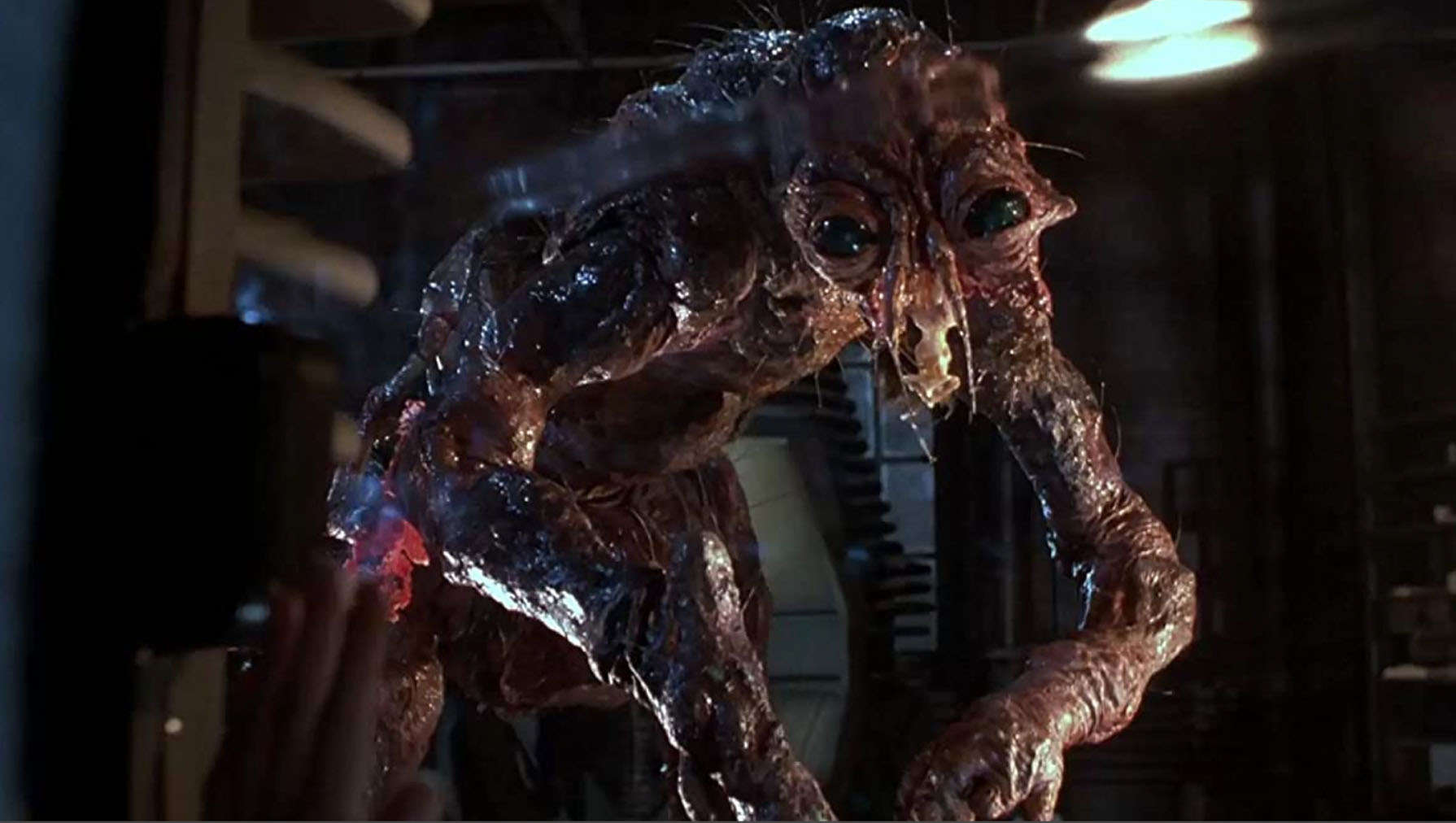Create a free profile to get unlimited access to exclusive videos, sweepstakes, and more!
Body-snatcher fungi zombify flies then invade and devour them alive from the inside

Something more nightmarishly disgusting than Jeff Goldblum morphing into a humanoid fly hybrid in The Fly actually exists. Brundle (above) at least merged with the insect — but there is a fungus that zombifies flies so it can eat them alive.
Gross enough yet? The newly discovered Strongwellsea tigrinae and Strongwellsea acerosa fungi chew holes in a fly’s abdomen to break in. They will then inject their prey with an amphetamine (or something like one) that puts it in a semi-lucid undead state until it's literally on its last breath and breaking out in spasms. As they feast on its innards, they also release fungal spores from those gaping holes so they can infect other flies. For all the B-horror material these parasitic fungi provide, they are thought to secrete a substance that keeps other microorganisms away from the fly’s wounds.
The irony is that while whatever ooze the parasites possibly use to repel other microbes might obviously not do much for flies, it could for humans. This is why the University of Copenhagen researchers who discovered the fungi and their accidental potential for healing are excited for future possibilities. Something otherwise terrifying can now be used to come up with viable treatments for infections.
“This is basic new knowledge that can serve as a basis for experimental studies of infection pathways and the bioactive substances involved,” said biologist Jørgen Eilenberg, who led a study recently published in Journal of Invertebrate Pathology, in a press release.
Parasitic Strongwellsea fungi are not so easy to take down. They can make it through the deep freeze of winter within the thick walls of their spores, then bust out in the spring hungry for some fly guts.
Maybe fungi have no brains, but these micro-parasites know what they’re doing. They prefer to keep their food fresh, which was evident to Eilenberg’s team when they observed infected flies that would keep buzzing around with two enormous holes in their abdomens as if nothing ever happened. A fly would maintain a relatively high energy level until its insides had been eaten to the point that it finally succumbed. The researchers had studied fungi that zombify cicadas, which produce a chemical similar to amphetamines so the bugs don’t realize they are being devoured.
Ampetamines are psychostimulants, meaning they fast-track messages being transmitted from the brain to the body, and vice versa. There are beneficial amphetamines used to treat ADHD and narcolepsy. Then you have things like speed — enough said. Though amphetamines may affect a fly differently than a human, euphoria and an energy boost are some of the side effects, which makes sense for a fungus that gets as many fresh meals as it can by keeping the insect alive and on an amphetamine high until the last possible moment.
Another side effect of amphetamines is increased sex drive, which benefits the fungi even more since the flies will infect any unsuspecting mates they find with this gnarly STD.
The cicada fungi’s modus operandi made the team suspect that the Strongwellsea fungi also use a psychostimulant for their dinner to keep from rotting. Not that there is any shortage of flies out there, and Strongwellsea can only ever get to so many, but they want to take advantage of what they have right in front of them when they can. Their other survival mechanism could be a lifesaver if it actually exists. Eilenberg and his team believe that the absence of other microorganisms in the fly’s abdominal holes — basically an invitation for everything to come crawling in — is a result of some mysterious repellant.
While the fly species Coenosia tigrina and Coenosia testacea are plagued by Strongwellsea fungi that turn them into zombies, these flies are hardly just victims, but predators that hunt other flies. So when they are infected, one predator is eating another. Go figure.


























